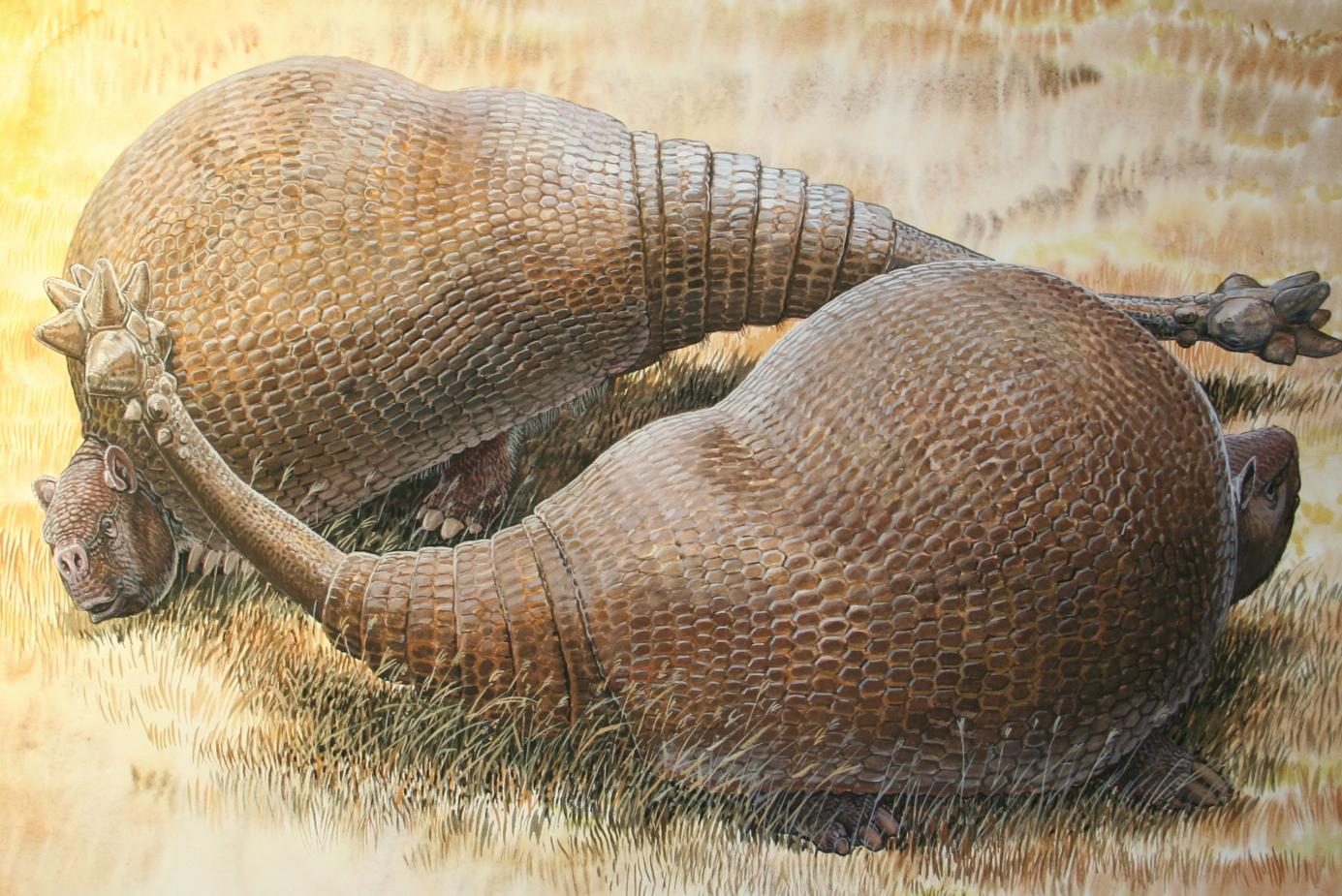Grass-eating mammals – including armadillos as big as Volkswagens – became more diverse in South America about 6 million years ago because shifts in atmospheric circulation drove changes in climate and vegetation, a team of researchers report in the April 29 issue of Proceedings of the National Academy of Sciences.
Geoscientists already knew the Earth was cooling 7 to 5.5 million years ago, a period of time known as the Late Miocene. But the changes in ocean climate during that time have been better understood than changes in the continental climate, says lead author Barbara Carrapa, professor and head of the University of Arizona Department of Geosciences.
The research team included Carrapa, UConn’s Ran Feng, an assistant professor-in-residence of geosciences, and Mark Clementz of the University of Wyoming in Laramie.
The new research shows that about 7 to 6 million years ago, the global scale tropical atmospheric circulation – known as the Hadley Cell – intensified. Warm, wet air from the tropics rose, traveled through the upper atmosphere toward the poles, and then sunk in the subtropics. This circulation was responsible for the trade winds, tropical rain belts, subtropical deserts, and hurricanes. As a result of the intensification, the climate of South America became drier; subtropical grasslands expanded; and the numbers of mammal species that were good at eating grasses increased.
Geoscientists use the geochemistry of ancient soils, specifically forms of the elements oxygen and carbon, to infer past precipitation and vegetation. Researchers had thought the precipitation at the time the soil formed was mostly a function of the site’s topography and elevation.
Carrapa, a sedimentary geologist and thermochronology specialist, wanted to test that idea by looking at the geochemistry of ancient soils on a continental scale. She teamed up with Clements, a paleontologist and long-time colleague, and Feng, whose work on the global climate model shows how the past climate could have created the patterns the team was seeing in the soil geochemistry.
The researchers compiled the published data of the oxygen-18/oxygen-16 ratio and carbon-13/carbon-12 ratio from ancient soils covering a wide swath of South America – from 15 degrees South latitude to 35 degrees South latitude, or about the change from La Paz, Bolivia to Buenos Aires, Argentina. Changes in the oxygen ratio provide information on past precipitation, while changes in carbon ratio indicate what plants were growing at the time.
The results were surprising, say the researchers. The changes in soil geochemistry during the late Miocene changed in latitudinal bands from north to south, indicating an underlying cause spanning much of South America, not just local changes in elevation or topography.
Feng loaded known information about the Miocene-to-late-Miocene climate, including atmospheric carbon dioxide concentrations and the ocean temperatures, into the computer model and then asked it to simulate three different versions of late Miocene climate – not much cooler, cooler, and much cooler than before. In each case, the simulation indicated what soil geochemistry would have occurred under that climate regime.
The team found the geochemistry of South American ancient soils predicted by the model matches the geochemistry of the actual soil samples. And Feng figured out that the Earth’s Hadley circulation intensified from 7 to 6 million years ago.
Feng’s work with the global climate model shows how the past climate could have created the patterns the team was seeing in the soil geochemistry. The carbon ratio from the ancient soils reflects the vegetation of the time and indicates that in the late Miocene, grasslands were expanding as the climate was changing.
Grasses contain silica, an abrasive substance, which is why grass-eaters have either high-crowned teeth or teeth that continue to grow. The mammals that became more prevalent in the late Miocene included giant armadillos and rhinoceros-like animals, and also smaller mammals.
“Looking at geological pasts is like looking at different planets. The state of the Earth we see today is very different from the Earth of 10 million years ago, 6 million years ago – it’s a different planet,” says Carrapa. “You have the possibility of looking at a different planet through the lens of time, and with the geological record we can do that.”
The National Science Foundation funded the research.



